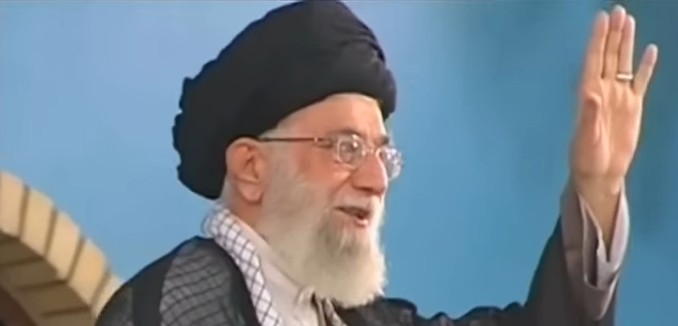Iranian Supreme Leader Ayatollah Ali Khamanei has conditioned acceptance of the nuclear deal on Iran being exempted from consequences of its ongoing support for international terrorism, human rights abuses, and nuclear cheating, CNN reported today.
Ayatollah Ali Khamenei’s official website carries a letter from the Supreme Leader to Iranian President Hassan Rouhani endorsing the deal, subject to certain conditions.
The nuclear deal will be rendered void if any future sanctions are imposed on Iran by any country, or under any pretext — including “human rights” and “alleged support of terrorism,” according to the letter.
The letter lists a series of nine key conditions before saying, “The motion passed by the National Security Council … adhering to the points mentioned, is approved.”
Khamenei contradicted the language of the nuclear agreement and the Obama administration’s interpretation of the deal in other ways.
According to Iran’s Mehr news agency, Khamenei “asserted that [the] Arak reactor modernization while maintaining its heavy water function will start only after signing a reliable contract for an alternative design. On the issue of enriched uranium transaction, the Leader also stressed on a reliable contract followed by adequate guarantees.”
Khamenei’s demand that sanctions relief be independent of requirements to redesign the Arak facility and remove enriched uranium seems to violate the language of the deal (.pdf), which stipulates that the IAEA must verify Iran’s implementation of the deal’s measures while the European Union simultaneously terminates, and the U.S. suspends, nuclear-related sanctions on Iran.
These measures include rendering the current reactor at Arak inoperable “such that the IAEA can verify that it will not be usable for a future nuclear application.” Similarly, Iran’s stockpile of enriched uranium “will be down blended to natural uranium level or be sold on the international market and delivered to the international buyer in return for natural uranium delivered to Iran.” In neither case is Iran’s obligation contingent about having contracts or guarantees in place.
Secretary of State John Kerry said when announcing the deal in July that Iran was obligated to reduce its stockpile of enriched uranium and remove the core of its heavy water reactor in order to receive sanctions relief.
And the relief from sanctions will only start when Tehran has met its key initial nuclear commitments – for example, when it has removed the core from the Arak reactor; when it has dismantled the centrifuges that it has agreed to dismantle; when it has shipped out the enriched uranium that it has agreed to ship out. When these and other commitments are met, the sanctions relief will then begin to be implemented in phases.
This was reiterated by a senior administration official said in a September briefing.
So starting on adoption day, about October 18th, we expect that Iran is going to need to make major changes to its Natanz enrichment facility. That will involve taking out thousands of centrifuges and putting them into IAEA-monitored storage. It will also involve taking out a very large amount of infrastructure, specifically some of the pipework and electrical infrastructure that allows for the enrichment process to work. All of this is going to take a lot of effort and probably a fair amount of time. But the key point in this action that the Iranians will undertake as well as the others is that the ball is really in Iran’s court. It’s difficult for us to fully predict how long it’s going to be until sanctions relief is implemented because we can’t offer that relief to the Iranians until they take all of these steps at Natanz, at Fordow, at the Arak reactor. And so we really structured the deal in such a way that they are required to do all those things before sanctions relief. So at Natanz, they need to do those things.
[Photo: wochit News / YouTube ]




